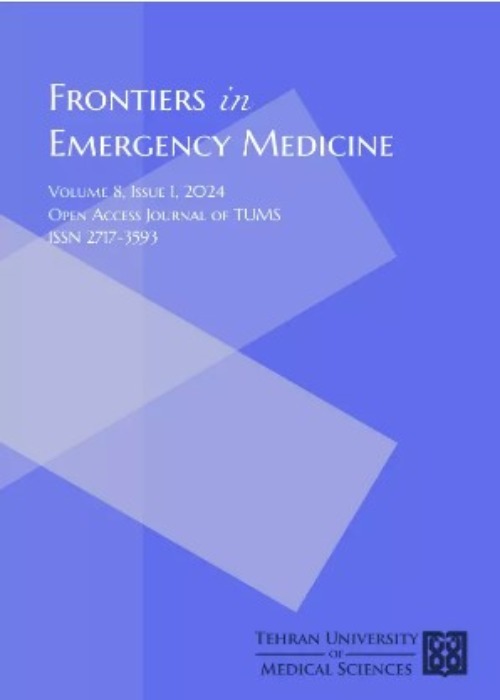Educational Intervention Effect on Pain Management Quality in Emergency Department; a Clinical Audit
Author(s):
Article Type:
Research/Original Article (دارای رتبه معتبر)
Abstract:
Introduction
Pain is a frequent complaint of patients who are referred to the emergency department (ED), which is ignored or mismanaged and, almost always, approached in terms of determining the cause of pain instead of pain management. Pain management is a challenging issue in the ED. Objective
This study was conducted to determine the effect of emergency residents education about pain assessment and pain-relief drugs in the improvement in pain management.Method
A clinical audit was carried out during the year 2015 in the ED of Imam Hossein Hospital, Tehran, Iran. All patients over 16-year-old who had been complaining of pain or another complaint that included pain were eligible. Data were collected using a preformed checklist. One senior emergency medicine resident was responsible for filling the checklist. In the first phase, patients were enrolled into the study and were divided into two groups according to whether they had or did not have a pain management order. In the second phase, the first- and second-year emergency medicine residents were trained during the various classes that they were required to attend, through a workshop conducted by experienced professors, and based on existing valid guidelines. In the third phase, patients were enrolled into the study, and the same checklists were completed.Results
A total of 803 patients (401 before training and 402 after) were assessed. The mean age of the patients before and after training of the residents was 59.19 ± 44.45 and 40.24 ± 19.40 years, respectively. Table 1 illustrates the demographic information of patients that were not significantly different before and after the training period (p > 0.05). The most common cause of pain was soft tissue injury, both before (36.3%) and after training (34.3%). The most frequent drug that was administered for pain control was morphine, both before (62.5%) and after (41.4%) training. Although the number of patients with moderate pain intensity was higher during the after-training period, pain control quality was described to be better in this group and success rate of pain control was significantly increased after training (p Conclusion
Findings from the present study showed that there was a significant deficiency in pain management of the admitted patients, and the most common reason for this was the physician's fear of the drugs side effects. However, significant progress was seen after the training regarding pain management process in ED.Keywords:
Language:
English
Published:
Frontiers in Emergency Medicine, Volume:2 Issue: 2, Spring 2018
Page:
3
magiran.com/p1843859
دانلود و مطالعه متن این مقاله با یکی از روشهای زیر امکان پذیر است:
اشتراک شخصی
با عضویت و پرداخت آنلاین حق اشتراک یکساله به مبلغ 1,390,000ريال میتوانید 70 عنوان مطلب دانلود کنید!
اشتراک سازمانی
به کتابخانه دانشگاه یا محل کار خود پیشنهاد کنید تا اشتراک سازمانی این پایگاه را برای دسترسی نامحدود همه کاربران به متن مطالب تهیه نمایند!
توجه!
- حق عضویت دریافتی صرف حمایت از نشریات عضو و نگهداری، تکمیل و توسعه مگیران میشود.
- پرداخت حق اشتراک و دانلود مقالات اجازه بازنشر آن در سایر رسانههای چاپی و دیجیتال را به کاربر نمیدهد.
In order to view content subscription is required
Personal subscription
Subscribe magiran.com for 70 € euros via PayPal and download 70 articles during a year.
Organization subscription
Please contact us to subscribe your university or library for unlimited access!


